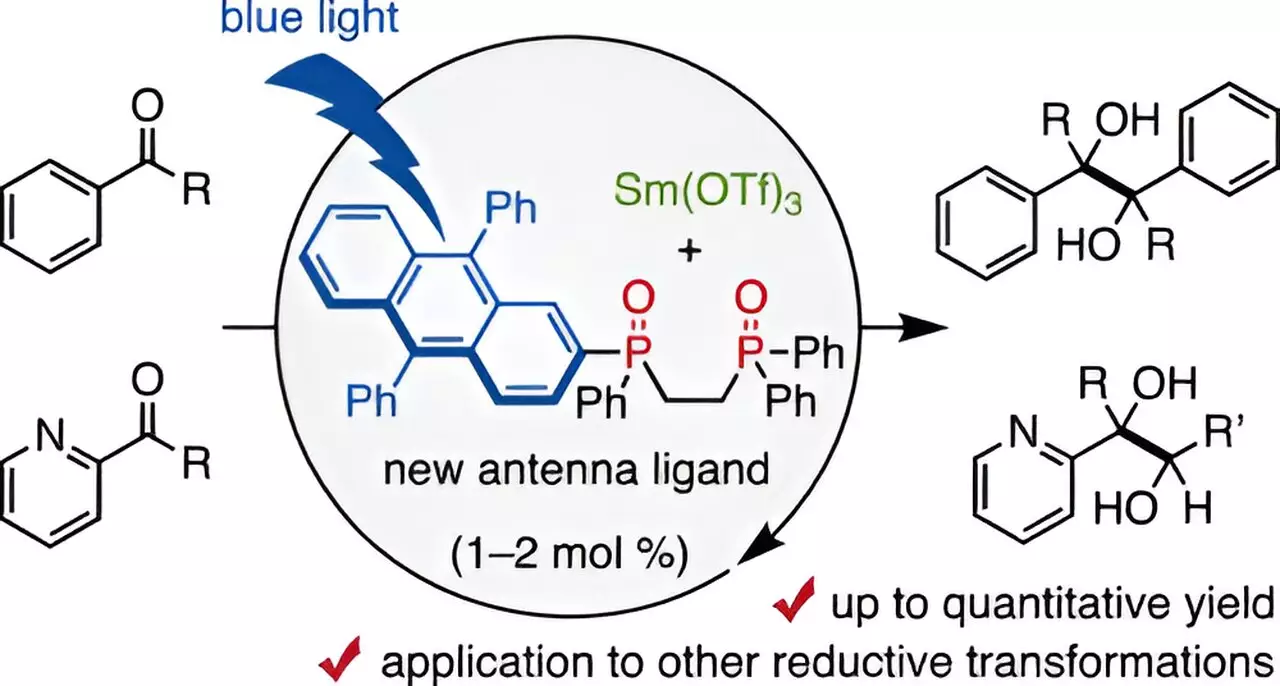Samarium (Sm), a member of the rare earth metals group, possesses unique properties that make it invaluable for organic chemists. One of its most notable abilities lies in its divalent compounds, which can carry out efficient single-electron transfer reductions. Among these compounds, samarium iodide (SmI2) stands out due to its moderate stability and effectiveness at room temperature. This feature makes SmI2 a preferred reagent for synthesizing pharmaceuticals and biologically active compounds. However, despite its benefits, the use of SmI2 and similar reagents has encountered significant challenges. Traditional reactions typically require SmI2 in stoichiometric quantities alongside the use of hazardous chemicals, leading to resource-intensive and costly processes.
Challenges of Traditional Samarium Reactions
The chemical community has diligently studied methods to minimize the volume of Sm reagents by employing them in catalytic amounts. However, many existing approaches necessitate harsh reaction conditions and the use of highly reactive reducing agents. Typically, these methods still require substantial quantities of Samarium—around 10–20% of the raw materials used. Given the elevated cost of Sm, this inefficiency has driven researchers to seek alternatives that can deliver catalytic effectiveness without excessive use of this precious resource.
To address these pressing issues, a new method emerges, one rooted in recent research efforts led by Assistant Professor Takahito Kuribara at Chiba University, Japan. His team’s innovative approach aims to drastically cut down the amount of Sm required while effectively facilitating reducing reactions.
In their groundbreaking study, Professor Kuribara and his colleagues devised a novel ligand, a 9,10-diphenyl anthracene (DPA)-substituted bidentate phosphine oxide. The innovation of this ligand rests in its ability to coordinate with trivalent samarium and harness visible light to enhance Sm-catalyzed reductive transformations. Dubbed a “visible-light antenna,” this ligand acts as a pivotal link that allows for the efficient transfer of electrons, thus promoting the catalytic process at lower Sm concentrations.
Prior to this finding, Kuribara’s team had worked with secondary phosphine oxides capable of driving reduction-oxidation reactions under visible light. Building on that foundation, they developed the DPA-substituted bidentate phosphine oxide that effectively minimized the necessary Sm loading down to a mere 1-2 mol%, compared to the traditional stoichiometric amounts required.
To validate their new ligand’s effectiveness, the research team conducted a series of controlled experiments. The findings were striking: under blue-light irradiation, the Sm catalyst combined with DPA-1 yielded pinacol coupling reactions of aldehydes and ketones—integral components in pharmaceutical synthesis—yielding up to 98%. The introduction of mild organic reducing agents, including amines, into the mix further showcased the versatility of this new approach, contrasting sharply with the highly reactive agents that had previously dominated the field.
Notably, the study also revealed that a judicious amount of water can enhance reaction yields, while excessive water exhibits the opposite effect. Comparatively, other ligands similar to DPA-1 yielded subpar results, underscoring the unique properties that make DPA-1 a standout performer in this domain.
Understanding DPA-1’s Mechanism
Delving deeper into the science behind the DPA-1 ligand, researchers analyzed the emission characteristics when paired with the Sm catalyst. Their investigations illuminated the dual role of DPA-1, serving both as a means of coordination with Sm and as an effective electron-transfer agent stimulated by visible light. This discovery has noteworthy implications for broader applications, as the researchers successfully utilized the DPA-1 and Sm catalyst in various molecular transformation reactions, including critical processes such as carbon-carbon bond formations and bond cleavages essential for drug development.
The integration of visible light in the reactions also proposed an avenue for synthesizing compounds through a combination of Sm-based reduction and photo-oxidation, presenting new realms of possibilities in the synthesis of organic compounds.
The research led by Assistant Professor Kuribara marks a significant advancement in organic chemistry, particularly within the context of utilizing Samarium catalysts. Their innovative use of the visible-light antenna ligand allows for reduced reliance on Sm, significantly lessening material costs and environmental impact. With growing interest in sustainable chemistry practices, this pioneering study offers a promising pathway toward more efficient and eco-friendly synthetic methodologies, pushing the boundaries of what is achievable in organic synthesis. The potential ramifications for pharmaceutical development and materials science are vast, paving the way for a future where noble metals like Samarium can be utilized more judiciously, ultimately fostering better research and industrial practices.

